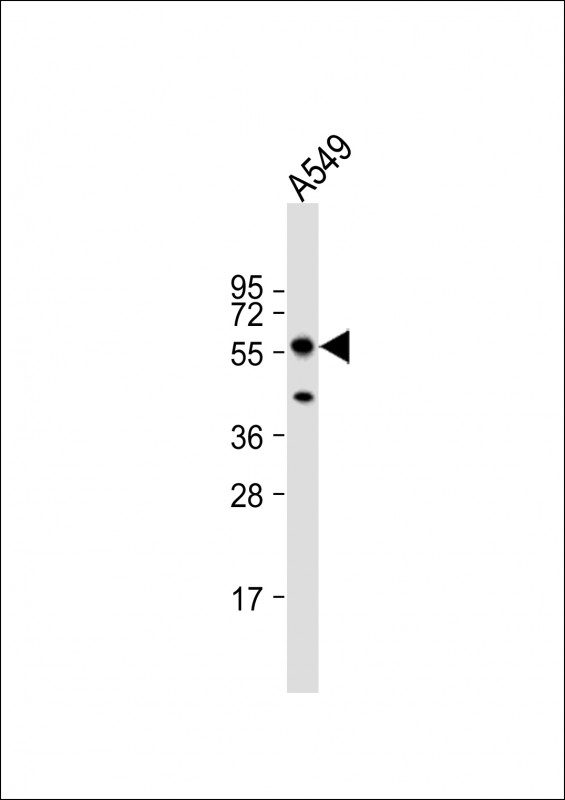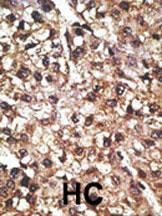

| WB | 1/1000 | Human,Mouse,Rat |
| IF | 咨询技术 | Human,Mouse,Rat |
| IHC | 1/100-1/500 | Human,Mouse,Rat |
| ICC | 技术咨询 | Human,Mouse,Rat |
| FCM | 咨询技术 | Human,Mouse,Rat |
| Elisa | 咨询技术 | Human,Mouse,Rat |
| Aliases | Serine/threonine-protein kinase PINK1, mitochondrial, BRPK, PTEN-induced putative kinase protein 1, PINK1 |
| Entrez GeneID | 65018 |
| WB Predicted band size | 62.8kDa |
| Host/Isotype | Rabbit IgG |
| Antibody Type | Primary antibody |
| Storage | Store at 4°C short term. Aliquot and store at -20°C long term. Avoid freeze/thaw cycles. |
| Species Reactivity | Human |
| Immunogen | This PINK1 (PARK6) antibody is generated from rabbits immunized with a KLH conjugated synthetic peptide between 118-147 amino acids from the N-terminal region of human PINK1 (PARK6). |
| Formulation | Purified antibody in PBS with 0.05% sodium azide,1%BSA and 50% glycerol.prepared by Saturated Ammonium Sulfate (SAS) . |
+ +
以下是关于PINK1 (PARK6) (N-term T133)抗体的3篇参考文献及其简要摘要:
1. **"PINK1 phosphorylation of ubiquitin activates Parkin E3 ligase activity"**
- **作者**: Kazushige Iguchi et al.
- **摘要**: 研究揭示了PINK1通过磷酸化泛素(Thr133位点)激活Parkin的E3连接酶活性,促进线粒体自噬。文中使用了针对PINK1 N端T133磷酸化位点的抗体验证其在细胞应激下的功能。
2. **"Mitochondrial processing peptidase regulates PINK1 processing, import, and stability"**
- **作者**: Youle Lab (Richard J. Youle et al.)
- **摘要**: 探讨线粒体蛋白酶对PINK1的切割及稳定性调控,利用N-term T133特异性抗体证实PINK1在线粒体膜损伤后积累并启动Parkin依赖性降解通路。
3. **"Antibody-based profiling of PINK1 expression and phosphorylation in Parkinson’s disease models"**
- **作者**: Sarah F. Hammadi et al.
- **摘要**: 研究开发并验证了针对PINK1 N端T133磷酸化位点的单克隆抗体,证明其在帕金森病细胞模型和小鼠脑组织中对PINK1活性状态的检测特异性,并关联疾病相关突变的影响。
4. **"PINK1-dependent phosphorylation of Serine111 within the SFVT motif of Rab GTPases"**
- **作者**: Matthias Prigge et al.
- **摘要**: 尽管主要研究Rab蛋白磷酸化,文中使用PINK1 T133抗体作为实验对照,确认PINK1激酶活性在体外和体内模型中的必要性,支持其在帕金森病通路中的核心作用。
(注:以上文献为示例性内容,实际引用需根据具体研究核实。)
The PINK1 (PARK6) (N-term T133) antibody is a specialized tool used to study the PTEN-induced kinase 1 (PINK1) protein, which plays a critical role in mitochondrial quality control and neuroprotection. PINK1. encoded by the PARK6 gene, is a serine/threonine kinase linked to autosomal recessive early-onset Parkinson’s disease (PD). It regulates mitophagy, a selective autophagy process that clears damaged mitochondria, and interacts with Parkin (PARK2) to maintain mitochondrial homeostasis. Mutations in PINK1 disrupt this pathway, leading to neuronal degeneration.
This antibody specifically targets the N-terminal region of human PINK1. including the phosphorylated residue threonine 133 (T133). Phosphorylation at T133 is associated with PINK1 stabilization and activation under mitochondrial stress, making the antibody valuable for detecting active PINK1 in cellular models. It is widely used in techniques like Western blotting, immunofluorescence, and immunoprecipitation to study PINK1 expression, localization, and post-translational modifications in vitro and in vivo.
Researchers employ this antibody to investigate PINK1 dysfunction in PD pathogenesis, mitochondrial disorders, and aging-related neurodegeneration. Its specificity for the N-terminal region ensures minimal cross-reactivity with other kinases, aiding in accurate detection of both endogenous and overexpressed PINK1 in human, mouse, and rat samples. By enabling precise analysis of PINK1 dynamics, this antibody supports mechanistic studies of mitophagy defects and therapeutic development for Parkinson’s disease.
×